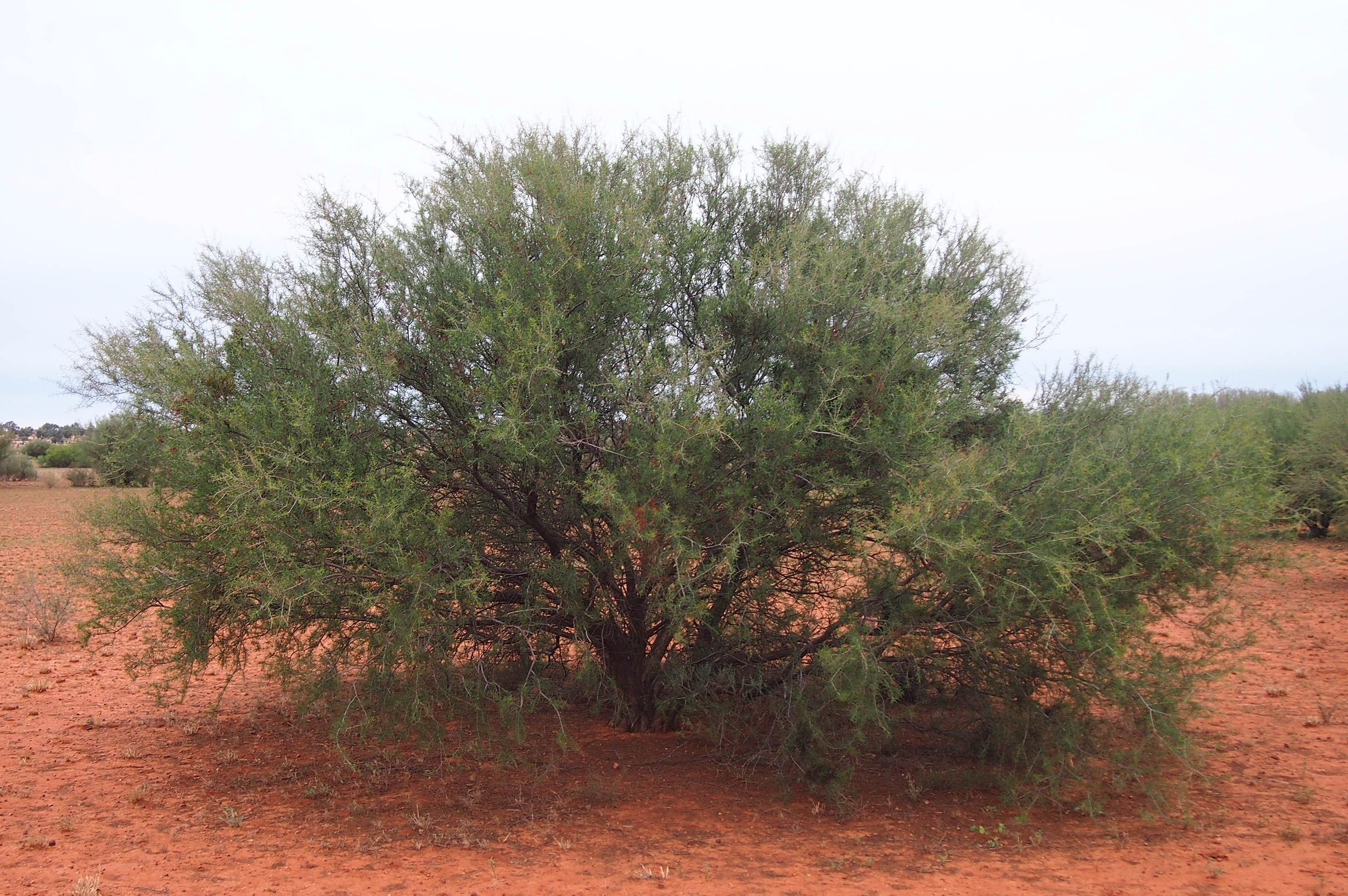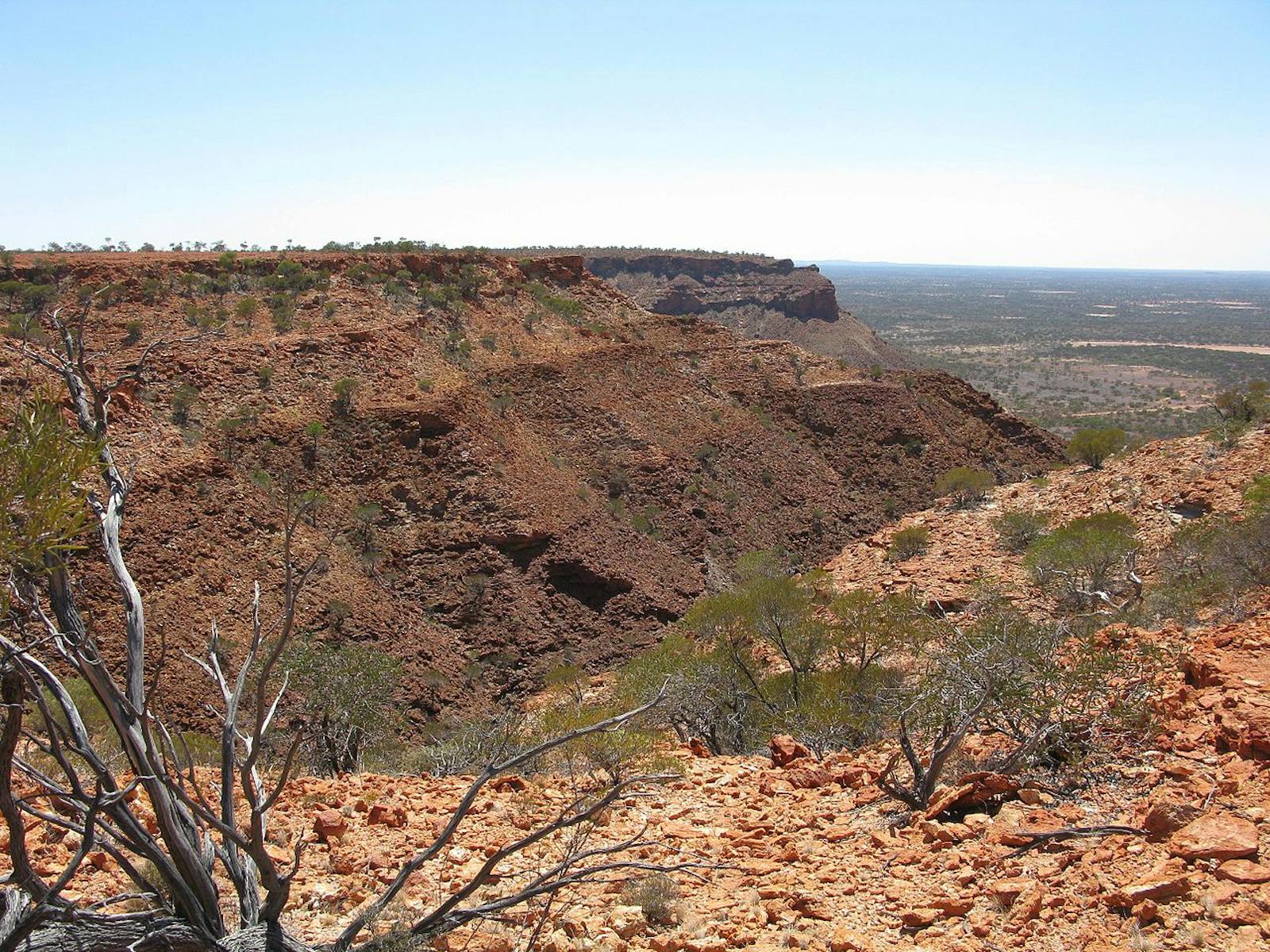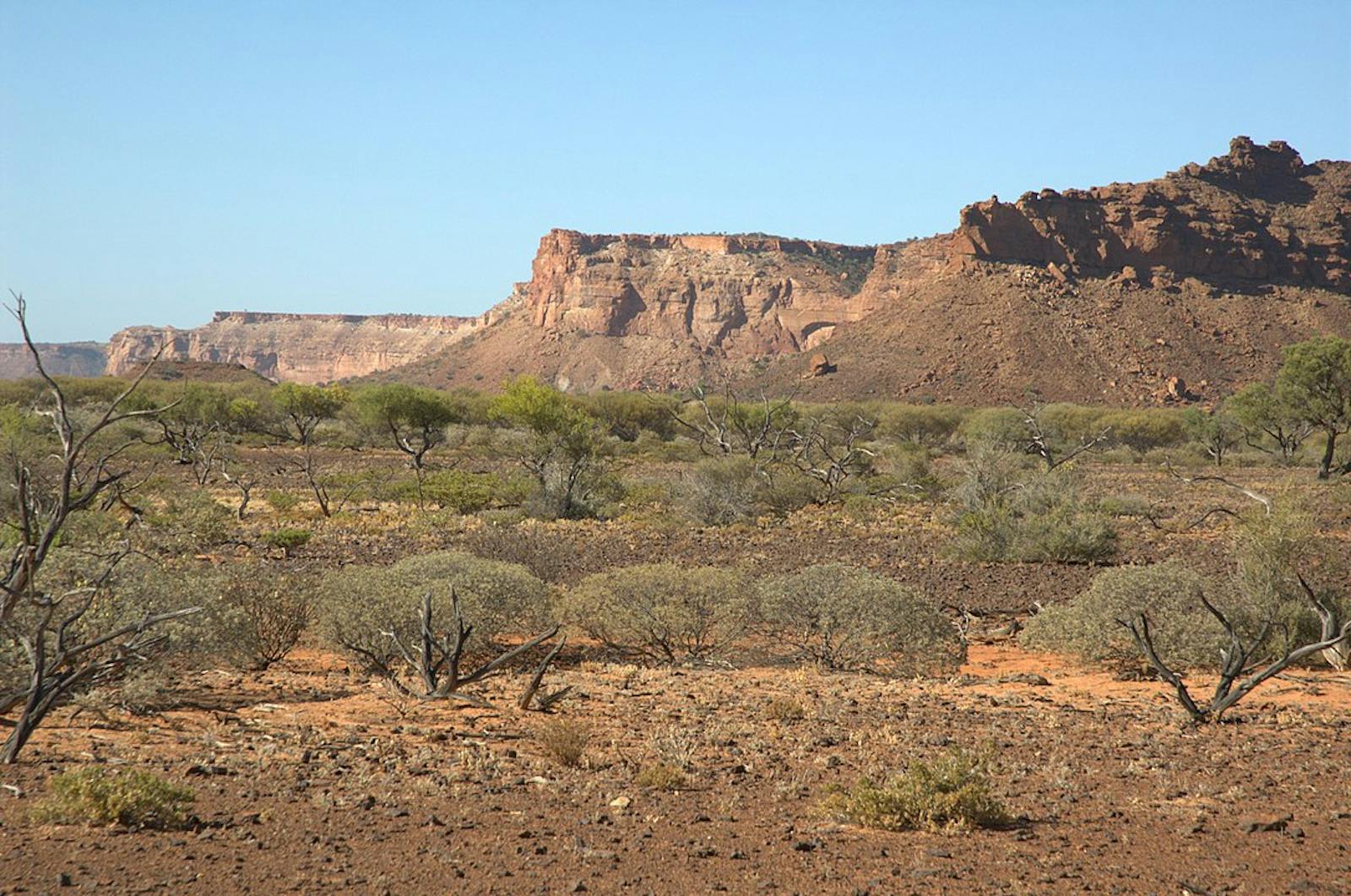Carnarvon Xeric Shrublands
The ecoregion’s land area is provided in units of 1,000 hectares. The conservation target is the Global Safety Net (GSN1) area for the given ecoregion. The protection level indicates the percentage of the GSN goal that is currently protected on a scale of 0-10. N/A means data is not available at this time.
Bioregion: West Australian Dry Coastal Shrublands (AU6)
Realm: Australasia
Ecoregion Size (1000 ha):
8,468
Ecoregion ID:
207
Conservation Target:
94%
Protection Level:
1
States: Australia
The Gascoyne broad-blazed slider, a hot-dog shaped lizard with tiny legs, slides through the dry shrublands of this remote region in western Australia. Acacia shrublands and saltbush are dominant, inhabited by thick-billed grasswrens and the red-tailed black cockatoos. This area may yet contain a surviving population of the lesser stick-nest rat, thought to be extinct.
-2009.jpg)
Flagship species: Red-tailed black cockatoo. Creative Commons.
The terrain of the shrublands is generally low, and the vegetation varies with the underlying geology, which consists mostly of recent alluvial, aeolian, and marine sediments over cretaceous strata. This is a very dry region with less than 250mm of rainfall per year.
Low samphire and saltbush shrublands cover the saline alluvial plains, snakewood scrublands cover the clay flats, bowgada low woodland covers sandy ridges and plains, red sand dune fields have scattered trees and shrub steppe over hummock grasslands, and Acacia startii/A. bivenosa shrublands cover limestone outcrops towards the north. The ecoregion has 16 threatened mammal species, 3 threatened bird species, 6 threatened reptile species, and 2 threatened fish species. Rare and threatened reptiles include the golden-tailed gecko (Strophurus taenicauda), common death adder (Acanthophis antarcticus), and Brigalow scaly-foot (Paradelma orientalis). Significant endemism is found in the Lerista group of small-legged slider lizards, with species like Lerista gascoynensis and Lerista lineata being endemic to this ecoregion. Threatened plant species, such as Acacia islana, Hibbertia monticola, and Lomandra teres can also be found.

Acacia tetragonophylla. Image credit: Mark Marathon, Creative Commons
Despite a range of industries, such as extensive cattle ranching, sheep grazing, and off-road tourism, relatively intact habitat dominates. Native species are impacted by invasive animals, such as feral goats, fox, and rabbit, as well as weeds including African boxthorn (Lycium ferocissimum), athel pine, mesquite and Jerusalem thorn. These invasive plants compete and smother native species. Fires recorded include a mixture of both hot burns and cool burns, yet the frequency in recent decades tend to be low.
The priority conservation actions are to: 1) protect native habitat on key biodiversity areas and protected areas, including the Kennedy Range National Park, Cape Range National Park, and Exmouth Gulf Mangroves, through threat abatement and vegetation management plans; 2) implement ecological sustainable practices in pastoral areas; and 3) create invasive predator and herbivore-free fenced reserves for threatened reptiles and plants.
Citations
- Australian Government. 2008. Carnarvon bioregion. Accessed 1 June 2019 at https://www.environment.gov.au/system/files/resources/a8015c25-4aa2-4833-ad9c-e98d09e2ab52/files/bioregion-carnarvon.pdf
- Desmond, A, A Chant. 2001. Carnarvon 2 (CAR2 – Wooramel subregion). A Biodiversity Audit of Western Australia’s 53 Biogeographical Subregions in 2002.
- Environmental Protection Agency. 2005. Southern Brigalow Belt Biogeographic Region -- Carnarvon National Park Management Plan. Queensland Parks and Wildlife Service, Queensland Government, The State of Queensland. Environmental Protection Agency.




